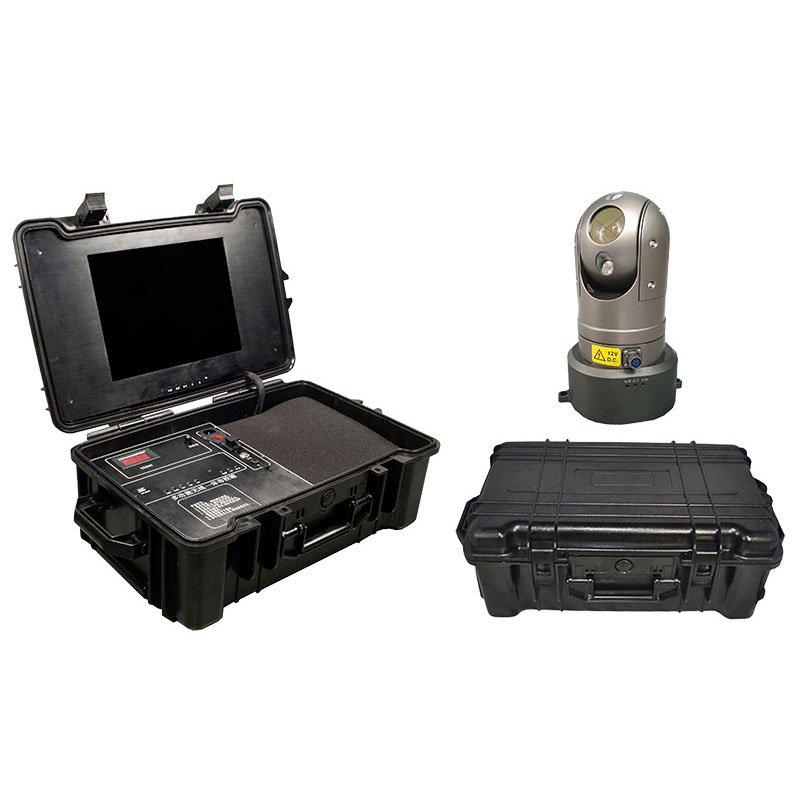The Development History of Wireless Ad Hoc Network Technology: From Military Origins to Flourishing in Multiple Fields
Wireless ad hoc networks, as a kind of decentralized and self-organizing multi-hop wireless local area network, have occupied an important position in the field of communication with their unique advantages. Their development history is rich and tortuous, from the initial sprout in the military field, gradually expanding to every corner of civilian use, bringing new vitality and transformation to modern communication.

Origin: Military needs gave rise to the initial form of the technology
The origin of wireless ad hoc networks can be traced back to the late 1960s. In 1968, the University of Hawaii in the United States constructed the first wireless ad hoc network - the ALOHA system - to connect computers in seven campuses spread across four islands. Although the computers in this system could not move and could communicate with each other in one hop, it was the first to study the problem of multiple-site access channels sharing a wireless medium, and proposed the famous ALOHA protocol, laying the foundation for the subsequent development of wireless ad hoc networks.
In 1972, with the support of the Advanced Research Projects Agency of the US Department of Defense, the University of Hawaii developed the Packet Radio Network PRNET, which supported node mobility. Unlike ALOHA, PRNET enabled communication over a wider geographical area using packet multi-hop store-and-forward methods. During its design phase, it was expected that the network could automatically initialize and operate, and nodes could discover neighboring nodes and form routes. This achievement marked a crucial step for wireless ad hoc networks in military applications, meeting the requirements of rapid movement of combat forces for wireless communication, strong resilience, and rapid network formation in environments without pre-established communication infrastructure.
In the early stage of development: Continued deep exploration in the military field
From the late 1970s to the early 1980s, the US Naval Research Laboratory completed the development of the short-wave self-organizing network HF-ITF system, which ensured the networking of ships, aircraft, and submarines within a 500-kilometer range for the naval task force. This system operated in the short-wave frequency band and used frequency hopping to form the network, being a low-speed self-organizing network. In 1983, the SURAN project funded by DARPA, which aimed to develop an anti-destruction and adaptive wireless network, focused on solving problems such as the large size of wireless communication devices, the inability of the networking algorithm to support large-scale networks, and poor anti-electronic interference capabilities. This project developed a low-cost packet radio station LPR, which improved the anti-interference ability by using direct sequence spread spectrum technology and adaptive forward error correction technology, and proposed a hierarchical link state routing protocol based on the LPR platform to support large-scale networks. These early research and practices continuously improved the application performance of wireless self-organizing networks in military environments.
Rapid Development: Transitioning from Military Applications to Civilian Use
In the early 1990s, the mobile communication and mobile terminal technologies experienced rapid development, which propelled the wireless ad hoc network technology into a stage of rapid growth and began to expand from the military communication field to the civilian communication field. In 1991, IEEE officially adopted the term "Ad hoc network" and defined it as a self-organizing, peer-to-peer, multi-hop, mobile wireless network. In 1993, the US Department of Defense launched the Near-Term Digital Radio Station Program, aiming to develop tactical wireless stations that support IP data services. Based on these stations, they could self-organize into two-layer Ad hoc networks. In 1994, the US DARPA launched the Global Mobile Information System (GloMo) program, in which the WINGs project aimed to achieve seamless integration of wireless mobile ad hoc networks and the multimedia Internet. That year, C.E. Perkins and D.B. Johnson published papers, proposing the idea of networking personal portable devices without infrastructure support and exploring corresponding routing algorithms, marking the transformation of mobile ad hoc network technology to the civilian domain. In 1997, the IEEE 802.11 standard was released, supporting one-hop Ad hoc operation mode, further promoting the development of wireless ad hoc networks. In the same year, the IETF established the MANET working group, responsible for researching routing protocols for mobile ad hoc networks with hundreds of nodes and formulating standards, laying the theoretical and standard foundation for the large-scale application of wireless ad hoc networks in the civilian field.
Expanding to New Directions: The Rise of Wireless Sensor Networks
Entering the 21st century, an important development direction of wireless ad hoc networks is wireless sensor networks. In 2000, the United States Army proposed the "Unmanned Ground Sensor Cluster" project, aiming to enable grassroots military commanders to deploy sensors as needed and collect precise battlefield information. In 2001, the Defense Advanced Research Projects Agency of the United States initiated the SensIT program, researching key technologies such as the self-organizing rapid deployment of sensor nodes in the battlefield environment and the collection of reliable real-time battlefield situation information. The same year, the United States Army proposed the "Smart Sensor Network Communication" project. Wireless sensor networks consist of a large number of inexpensive micro sensor nodes, forming a multi-hop self-organizing network system through wireless communication, collaborating to sense, collect, and process the information of the sensing objects within the network coverage and transmitting it to the recipients. Due to the random distribution of nodes and limited transmission power, wireless ad hoc network technology has become the inevitable choice for its networking communication. The development of this field has greatly expanded the application boundaries of wireless ad hoc networks, and has shown great potential in civilian fields such as environmental monitoring, industrial monitoring, and smart home.
Present and Future: Continuous Innovation, Integrated Development
Nowadays, wireless ad hoc network technology is constantly innovating. For instance, the Mesh wireless ad hoc network system, as a new type of wireless network technology, is designed based on the concept of "wireless mesh network". In non-line-of-sight and fast-moving conditions, it utilizes the distributed network architecture of an uncentralized self-organizing network to achieve real-time interaction of multiple multimedia information such as voice, data, and images. It is widely applied in fields such as disaster rescue, border protection, and smart cities. In 2025, the patent application by Shanghai Guanmei Communication Technology Co., Ltd. for the node synchronization technology for wireless ad hoc networks was approved. By achieving effective synchronization between the main node and the relay slave nodes, and using different channels to send frame synchronization signals based on the changes in the frequency hopping sequence, it enhances the anti-interference ability of the communication system in complex environments, providing a more reliable guarantee for the application of wireless ad hoc networks in complex electromagnetic environments.
Looking ahead, with the development of technologies such as 5G, 6G and AI, wireless ad hoc networks will evolve towards higher performance, greater intelligence, and greater security and reliability. It will deeply integrate with technologies like satellite communication and edge computing, further expanding its application boundaries. It will play a key role in fields such as smart agriculture, smart grids, unmanned aerial vehicle collaborative operations, and autonomous driving, injecting strong impetus into the digital and intelligent transformation of various industries. However, at the same time, issues such as cybersecurity, energy consumption optimization, and standard unification still require continuous efforts by the industry to overcome, in order to fully unleash the huge potential of wireless ad hoc networks in the future communication era.
-
 2025-10-30
2025-10-30 -
IP Mesh Radios: The Future of Tactical Wireless Networking
2025-10-27 -

What Is Wireless Data Transmission and How Does It Work?
2025-09-26 -
What are the Applications of Ad Hoc Wireless Network?
2025-09-11 -

What Are Point to Point Wireless Bridges Often Used For?
2025-09-05 -

MESH Networking Module Selection Guide: From Dismounted Soldiers to UAV Applications
2025-08-28 -

What Is a Point to Point Wireless Bridge Connection?
2025-08-07 -

What Is the Difference Between a Wireless Network and an Ad Hoc Network?
2025-07-16









